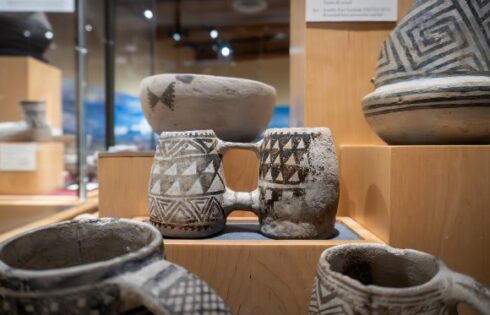
Coming this April: The University at Buffalo-SUNY will host an all-day confab devoted to a “critical history of the white cultural nationalisms” involved in 19th century American architecture.
Part of the “Race + Modern Architecture Project” which examines “racial discourses of western architectural history from the Enlightenment to the present,” the “Whiteness of American Architecture” symposium features a quintet of architectural historians who will provide answers to this central question:
“What definitions of American identity have historically influenced the most celebrated national architectural movements of the long nineteenth century, and how has this influence been manifested in the labor relations, ideological commitments and material dimensions of innovative architectural forms?”
More from the event description:
In the past, architectural historians have optimistically, and perhaps anachronistically, interpreted American architectural movements through the lens of an inclusive American liberalism that embraces people of all colors, nationalities and religious creeds. Yet such an understanding fails to examine these national movements from the lens of white settler colonialism and the exclusive cultural nationalist ideologies that were often intimated by their appropriation for various political purposes. How and when did American Architecture exclude certain groups of people by internalizing or otherwise normalizing the white nativist ideologies of American democracy?
[…] the elevation of the “gentleman architect” depended on the cultivation of a stratified categorization of labor and social status that legally and ideologically separated intellectual and manual work by placing the licensed architect at the apex of what can now be called a Social Darwinist evolutionary hierarchy of talent. In this process, black, brown and Chinese labor was erased from historical memory as the vision of the architect presided above all other concerns. In addition, the concerns of wealthy white clients were privileged above the servant classes that often made their lives of leisure possible in the first place.
Unsurprisingly, the current presidential administration manages to get woven into the narrative: “Recent events in American politics,” as well as a “renewed sense of white nativism” and the “rise of white nationalist groups,” mandate a reexamination of “the inclusive assumptions” of long-held views surrounding “nationalist architectural movements.”
“Only a forthright critique of the latent whiteness of American Architecture,” the summary continues, “will enable architectural historians to combat the ideological appropriation of these building traditions for nefarious means.”
The event schedule features the lectures “Building Race and Nation: Slavery and Antebellum American Civic Architecture” and “Where Was Jim Crow? Living in Wright’s America.”
According to the participant profiles, keynote speaker Dianne Harris’s expertise “is united by a constant interest in the relationship between the built environment and the construction of racial and class identities” and Harris is particularly noted for her “contributions to the study of ‘race and space.'”
The other keynote scholar, Mabel O. Wilson of Columbia University, focuses on “space, politics and cultural memory in black America; race and modern architecture; new technologies and the social production of space.”
MORE: Museums need to ‘reconsider’ European art exhibits due to white supremacy
MORE: Notre Dame event: Whiteness is an ‘oppressive political condition’
IMAGE: YouTube




Please join the conversation about our stories on Facebook, Twitter, Instagram, Reddit, MeWe, Rumble, Gab, Minds and Gettr.